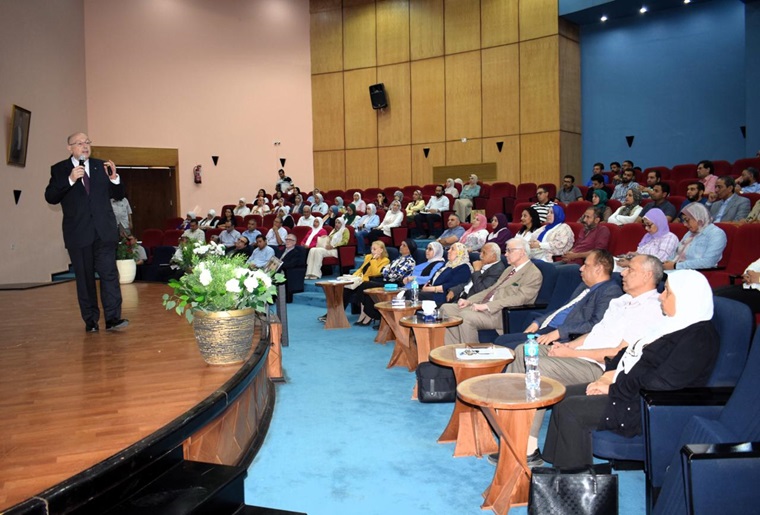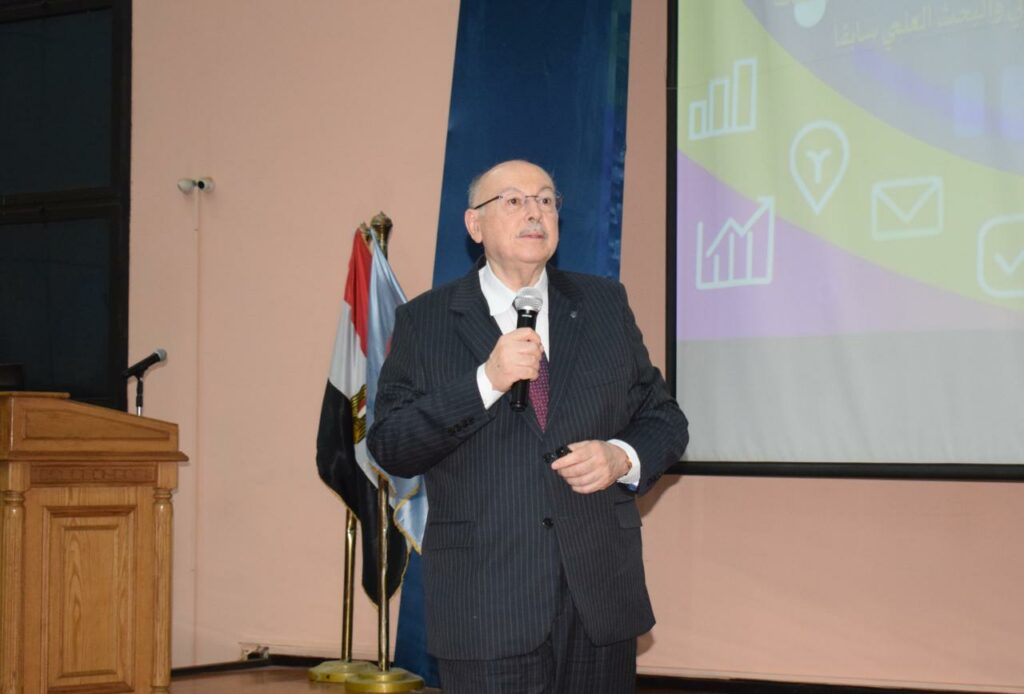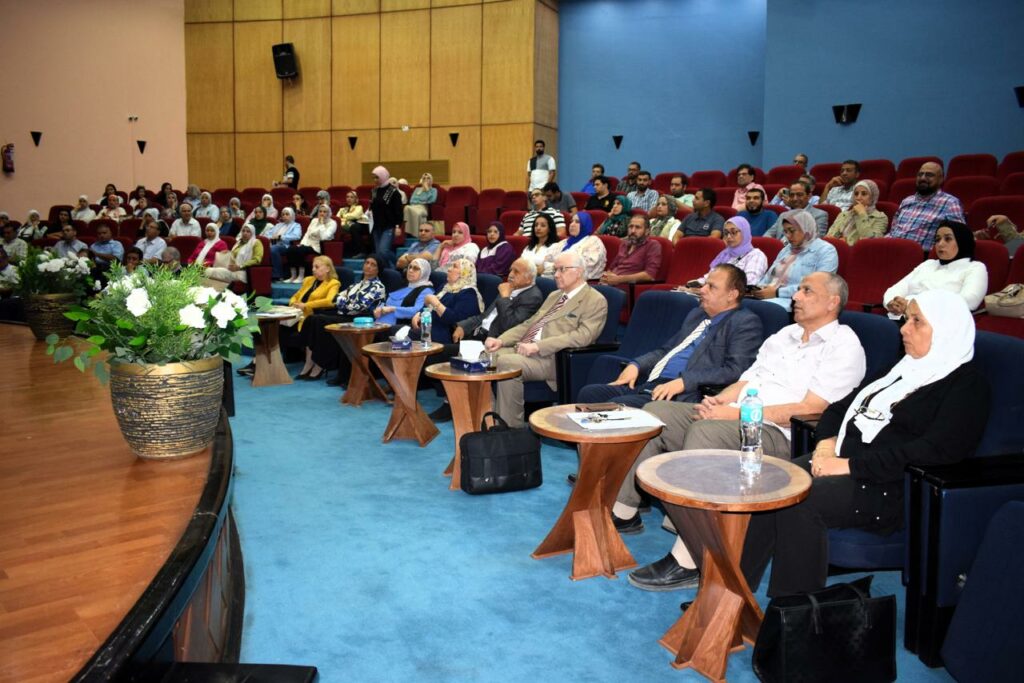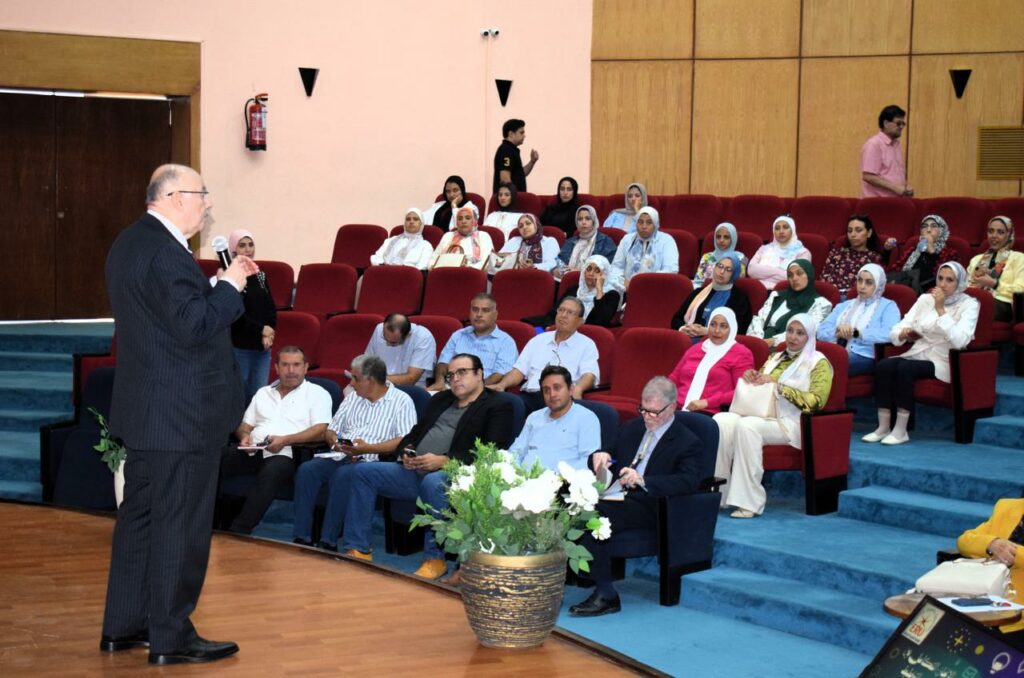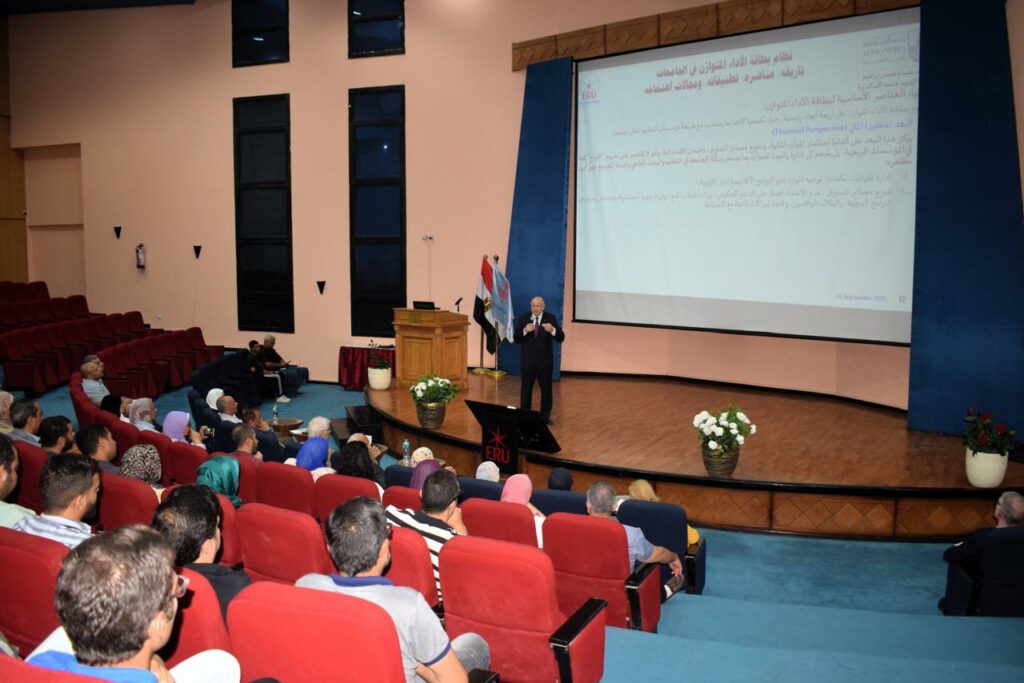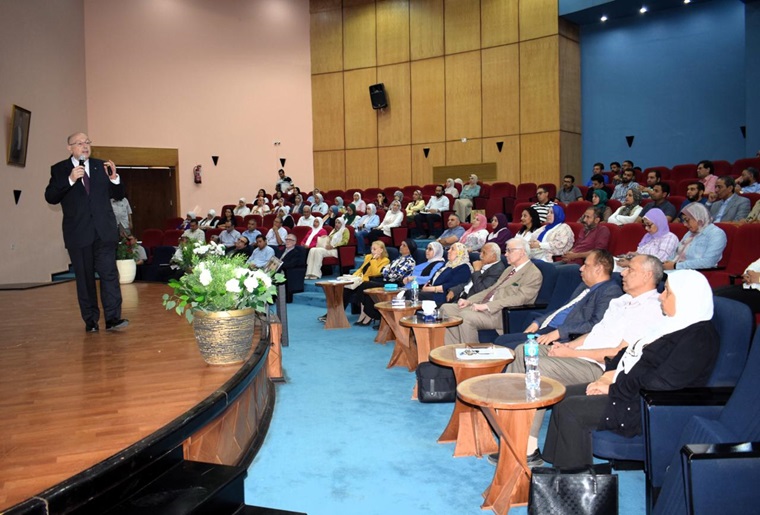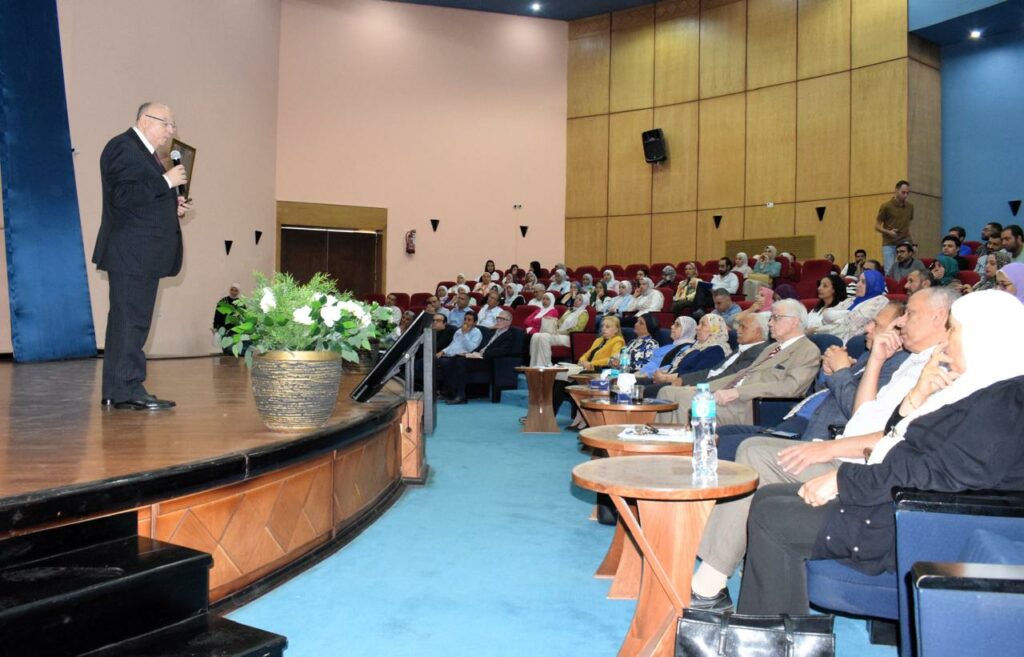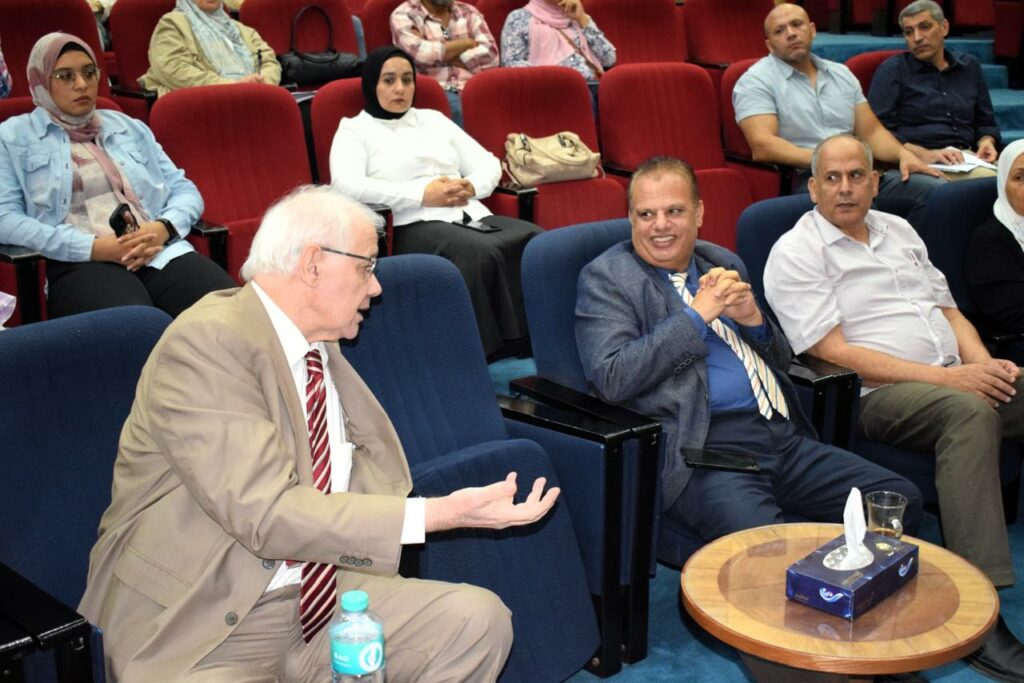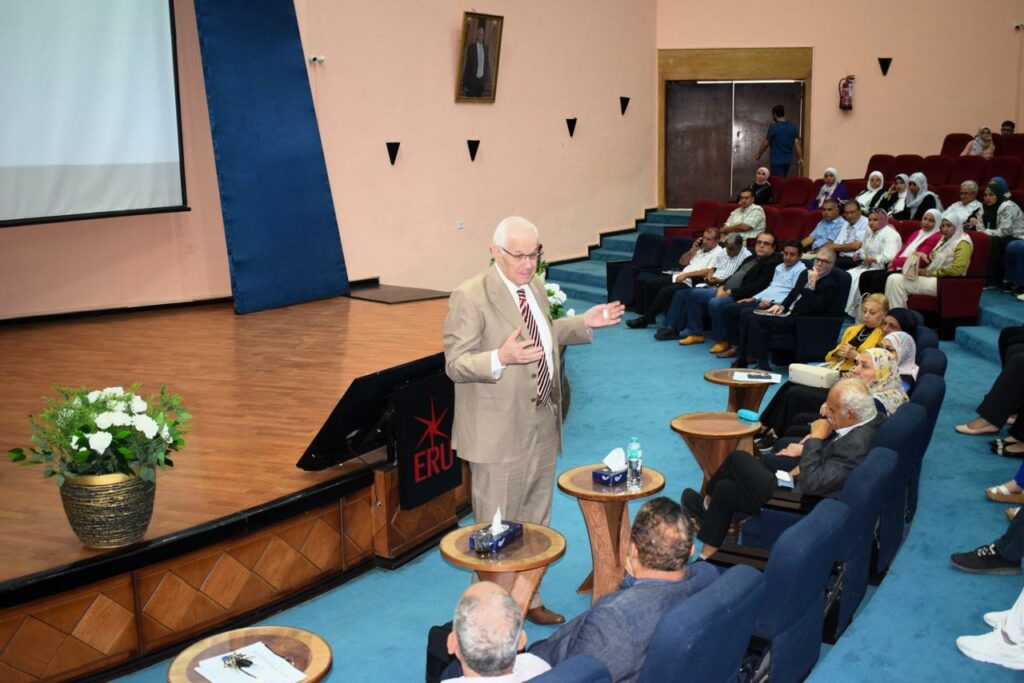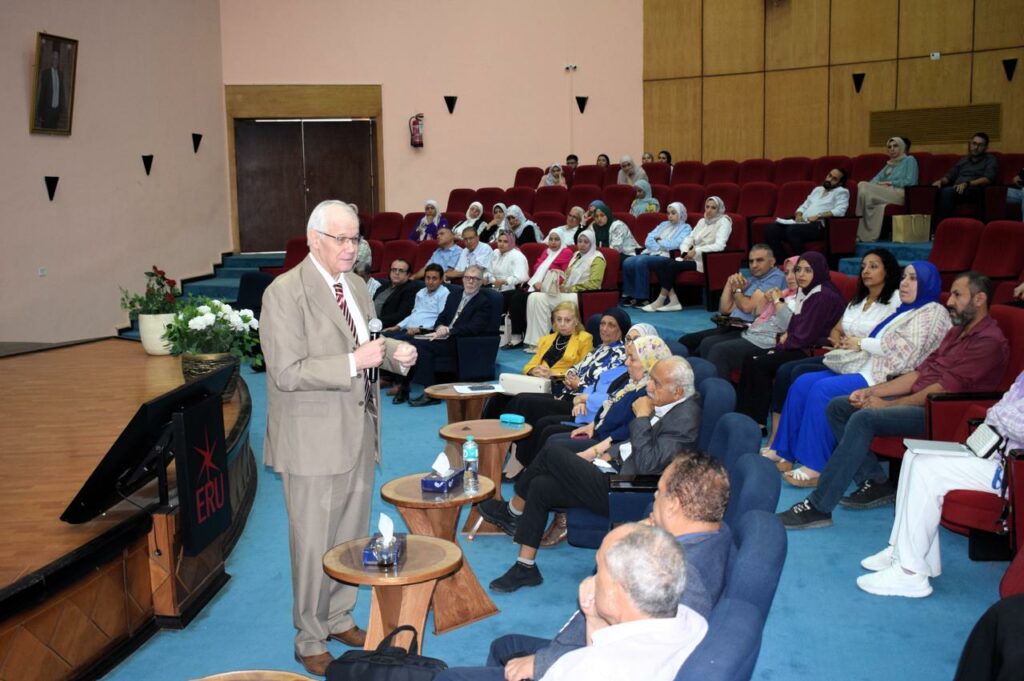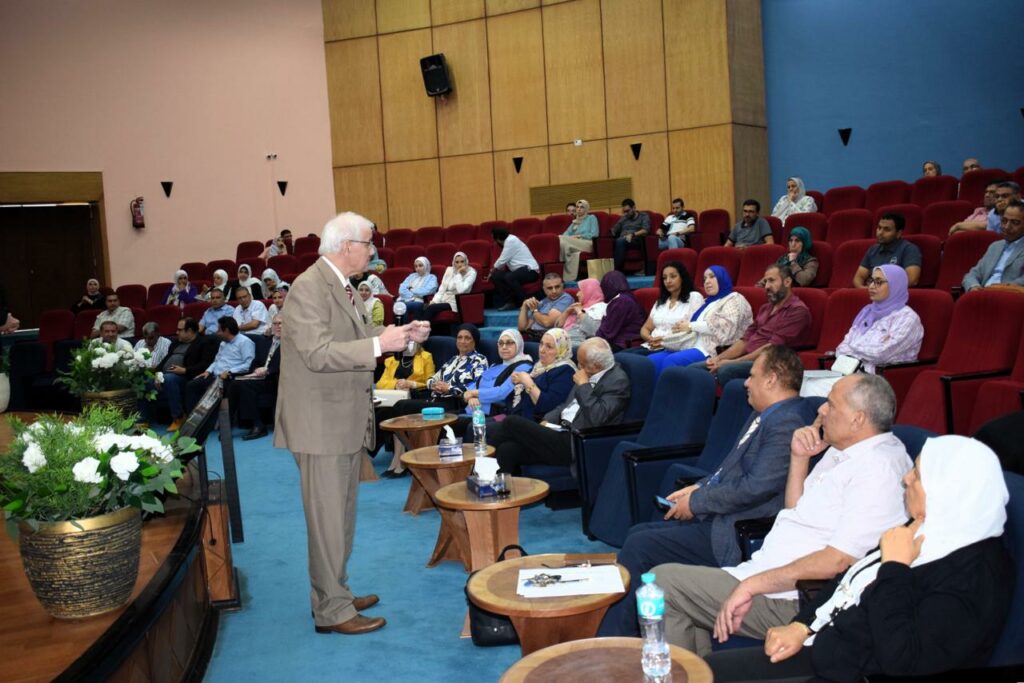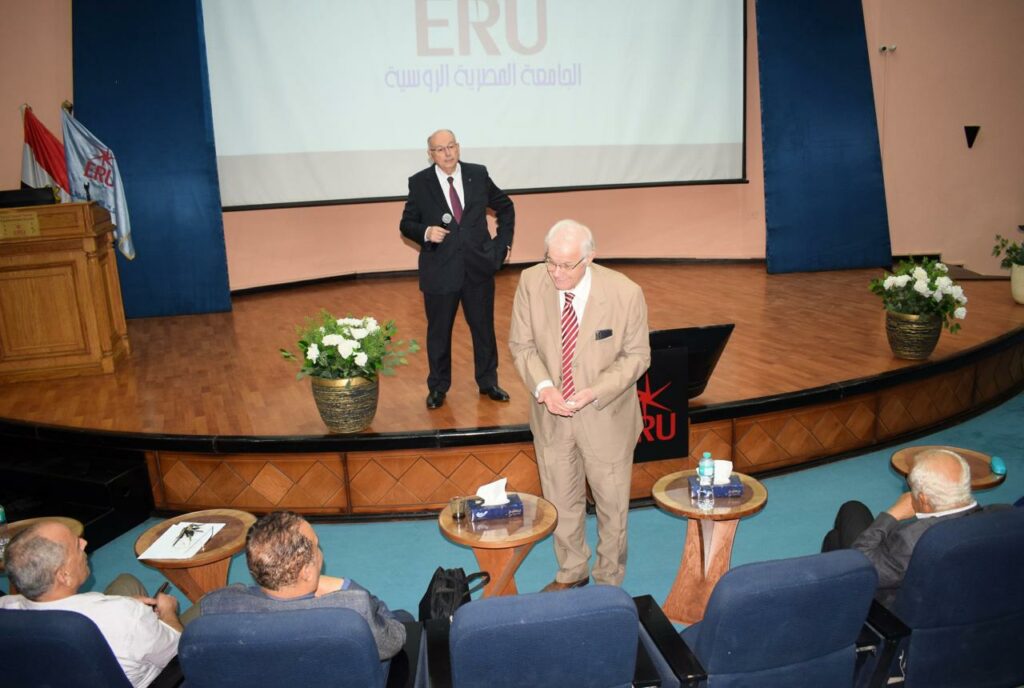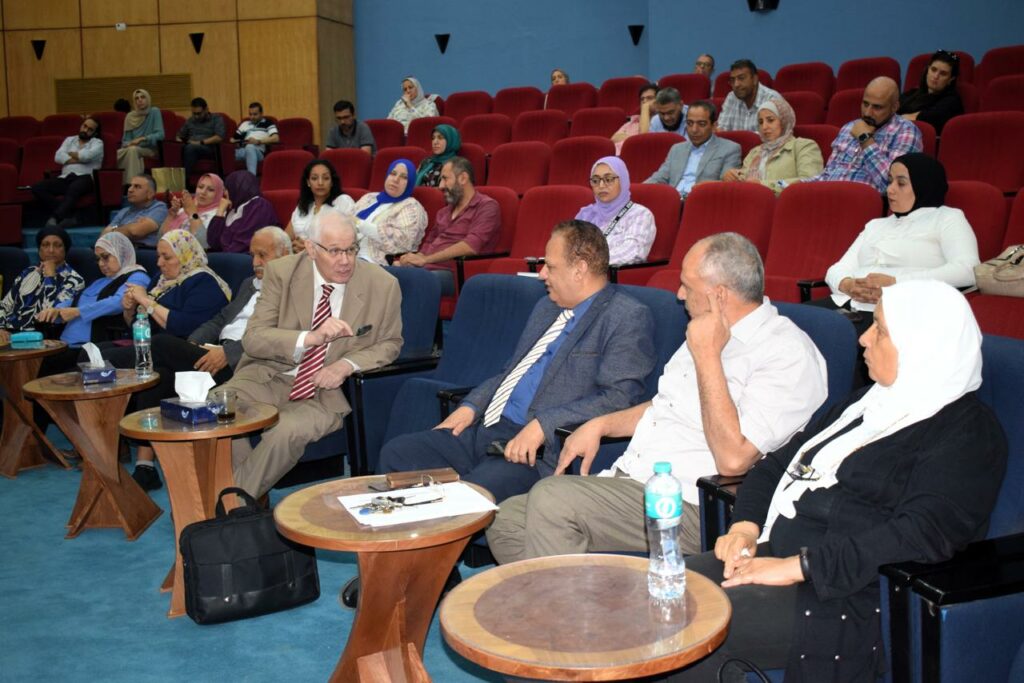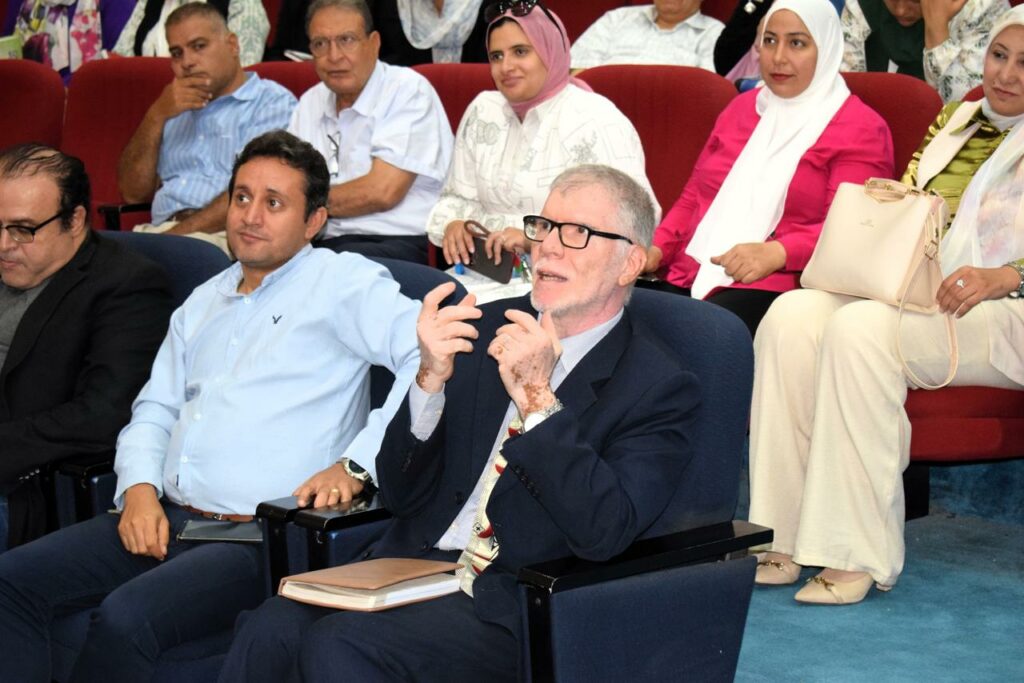Unique Lecture at the Egyptian Russian University on the Integration between the Balanced Scorecard and Strategic Planning and Their Role in Enhancing Institutional Performance Efficiency
As part of the ongoing efforts to create a unique academic environment capable of generating positive impact, and under the patronage of Prof. Sherif Fakhry Abdelnabi – President of the Egyptian Russian University, and Prof. Hisham Hamed – Dean of the Faculty of Artificial Intelligence and Director of the Quality Assurance Center at the university, Prof. Essam Khamees – Academic Advisor to the President of the University – delivered a lecture entitled:
“From Vision to Achievement: How the Integration between the Balanced Scorecard and Strategic Planning Achieves Institutional Excellence”
The lecture was attended by senior university administrators, deans, heads of departments, directors of excellence centers, managers and members of the Quality Assurance Unit, along with a distinguished group of faculty members and teaching assistants.
The lecture aimed to shed light on the complementary relationship between the Balanced Scorecard and Strategic Planning, considering them as two pivotal tools in the management of modern universities, and as a cornerstone for achieving institutional excellence and leadership.
During the lecture, Prof. Essam Khamees discussed the following themes:
New learning patterns such as Mixed Learning, Blended Learning, Hybrid Learning, and Integrated Learning.
Analysis of the Balanced Scorecard system in universities in terms of its history, components, applications, and areas of focus, with emphasis on its role in translating strategies and academic plans into measurable objectives, thereby enhancing competitiveness in international rankings and supporting community service and international partnerships.
The four fundamental perspectives of the Balanced Scorecard: the financial perspective, the customer (beneficiary) perspective, the internal processes perspective, and the learning and growth perspective.
Practical components of the Balanced Scorecard, which translate strategic objectives into measurable and trackable indicators, including: sub-goals, Key Performance Indicators (KPIs), activities, responsibilities, target/actual values, variances, budgets, challenges, and return on investment.
Diverse fields of application, including higher education, the private sector, the public sector, and the healthcare sector.
Highlighting the Balanced Scorecard as an integrated strategic framework that has transformed the way institutional performance is managed by combining financial and non-financial objectives to achieve sustainable success.
A comparative study between SWOT Analysis and the Balanced Scorecard, supported by applied examples in higher education and scientific research to illustrate how both can be used to build university strategies.
Proposing a strategy and vision for the Egyptian Russian University to move from development to leadership through reliance on the Balanced Scorecard, covering all sectors of the university.
Emphasizing the university’s activation of the National Strategy for Higher Education and Scientific Research as a guiding framework that strengthens the role of universities in national development, contributes to achieving sustainable development goals, improves the quality of education, and enhances research, innovation, and community service.
The event concluded with remarkable interaction from the attendees, who praised the scientific depth and practical applications addressed in the lecture. They noted that it opened new horizons for strengthening the Egyptian Russian University’s position on the map of academic and research excellence.
In a closing remark, Prof. Sherif Fakhry Abdelnabi, President of the University, stressed the importance of involving faculty members with the Quality Assurance Unit in formulating the university’s new strategy (2025–2030) using the Balanced Scorecard as a main tool. This was met with positive response from the audience, who expressed their full readiness for active participation in its implementation.
The participants also expressed their great appreciation for the lecture, considering it a qualitative step that supports the university’s vision for development and leadership both locally and internationally.

